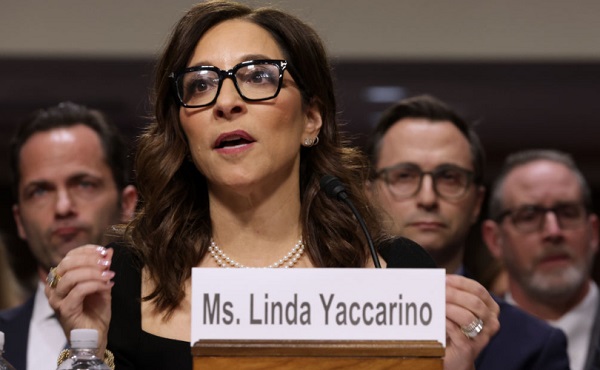Great Reset
Assisted suicide activists should not be running our MAID program

From the MacDonald Laurier Institute
By Shawn Whatley
We should keep the right-to-die foxes out of the regulatory henhouse
The federal government chose a right-to-die advocacy group to help implement its medical assistance in dying legislation. It’s a classic case of regulatory capture, otherwise known as letting the foxes guard the henhouse.
In the “Fourth annual report on Medical Assistance in Dying in Canada 2022,” the federal government devoted several paragraphs of praising to the Canadian Association of MAID Assessors and Providers (CAMAP).
“Since its inception in 2017, (CAMAP) has been and continues to be an important venue for information sharing among health-care professionals and other stakeholders involved in MAID,” reads the report.
With $3.3 million in federal funding, “CAMAP has been integral in creating a MAID assessor/provider community of practice, hosts an annual conference to discuss emerging issues related to the delivery of MAID and has developed several guidance materials for health-care professionals.”
Six clinicians in British Columbia formed CAMAP, a national non-profit association, in October 2016. These six right-to-die advocates published clinical guidelines for MAID in 2017, without seriously consulting other physician organizations.
The guidelines educate clinicians on their “professional obligation to (bring) up MAID as a care option for patients, when it is medically relevant and they are likely eligible for MAID.” CAMAP’s guidelines apply to Canada’s 96,000 physicians, 312,000 nurses and the broader health-care workforce of two-million Canadians, wherever patients are involved.
The rise of CAMAP overlaps with right-to-die advocacy work in Canada. According to Sandra Martin, writing in the Globe and Mail, CAMAP “follow(ed) in the steps of Dying with Dignity,” an advocacy organization started in the 1980s, and “became both a public voice and a de facto tutoring service for doctors, organizing information-swapping and self-help sessions for members.”
Prime Minister Justin Trudeau tapped this “tutoring service” to lead the MAID program. CAMAP appears to follow the steps of Dying with Dignity, because the same people lead both groups. For example, Shanaaz Gokool, a current director of CAMAP, served as CEO of Dying with Dignity from 2016 to 2019.
A founding member and current chair of the board of directors of CAMAP is also a member of Dying with Dignity’s clinician advisory council. One of the advisory council’s co-chairs is also a member of Dying with Dignity’s board of directors, as well as a moderator of the CAMAP MAID Providers Forum. The other advisory council co-chair served on both the boards of CAMAP and Dying with Dignity at the same time.
Overlap between CAMAP and Dying with Dignity includes CAMAP founders, board members (past and present), moderators, research directors and more, showing that a small right-to-die advocacy group birthed a tiny clinical group, which now leads the MAID agenda in Canada. This is a problem because it means that a small group of activists exert outsized control over a program that has serious implications for many Canadians.
George Stigler, a Noble-winning economist, described regulatory capture in the 1960s, showing how government agencies can be captured to serve special interests.
Instead of serving citizens, focused interests can shape governments to serve narrow and select ends. Pharmaceutical companies work hard to write the rules that regulate their industry. Doctors demand government regulations — couched in the name of patient safety — to decrease competition. The list is endless.
Debates about social issues can blind us to basic governance. Anyone who criticizes MAID governance is seen as being opposed to assisted death and is shut out of the debate. At the same time, the world is watching Canada and trying to figure out what is going on with MAID and why we are so different than other jurisdictions offering assisted suicide.
Canada moved from physician assisted suicide being illegal to becoming a world leader in organ donation after assisted death in the space of just six years.
In 2021, Quebec surpassed the Netherlands to lead the world in per capita deaths by assisted suicide, with 5.1 per cent of deaths due to MAID in Quebec, 4.8 per cent in the Netherlands and 2.3 per cent in Belgium. In 2022, Canada extended its lead: MAID now represents 4.1 per cent of all deaths in Canada.
How did this happen so fast? Some point to patients choosing MAID instead of facing Canada’s world-famous wait times for care. Others note a lack of social services. No doubt many factors fuel our passion for MAID, but none of these fully explain the phenomenon. In truth, Canada became world-famous for euthanasia and physician-assisted suicide because we put right-to-die advocates in charge of assisted death.
Regardless of one’s stance on MAID, regulatory capture is a well-known form of corruption. We should expect governments to avoid obvious conflicts of interest. Assuming Canadians want robust and ready access to MAID (which might itself assume too much), at least we should keep the right-to-die foxes out of the regulatory henhouse.
Shawn Whatley is a physician, a Munk senior fellow with the Macdonald-Laurier Institute and author of “When Politics Comes Before Patients: Why and How Canadian Medicare is Failing.”
Business
Trump slaps Brazil with tariffs over social media censorship

From LifeSiteNews
By Dan Frieth
In his letter dated July 9, 2025, addressed to President Luiz Inácio Lula da Silva, Trump ties new U.S. trade measures directly to Brazilian censorship.
U.S. President Donald Trump has launched a fierce rebuke of Brazil’s moves to silence American-run social media platforms, particularly Rumble and X.
In his letter dated July 9, 2025, addressed to President Luiz Inácio Lula da Silva, Trump ties new U.S. trade measures directly to Brazilian censorship.
He calls attention to “SECRET and UNLAWFUL Censorship Orders to U.S. Social Media platforms,” pointing out that Brazil’s Supreme Court has been “threatening them with Millions of Dollars in Fines and Eviction from the Brazilian Social Media market.”


Trump warns that these actions are “due in part to Brazil’s insidious attacks on Free Elections, and the fundamental Free Speech Rights of Americans,” and states: “starting on August 1, 2025, we will charge Brazil a Tariff of 50% on any and all Brazilian products sent into the United States, separate from all Sectoral Tariffs.” He also adds that “Goods transshipped to evade this 50% Tariff will be subject to that higher Tariff.”
Brazil’s crackdown has targeted Rumble after it refused to comply with orders to block the account of Allan dos Santos, a Brazilian streamer living in the United States.
On February 21, 2025, Justice Alexandre de Moraes ordered Rumble’s suspension for non‑compliance, saying it failed “to comply with court orders.”
Earlier, from August to October 2024, Moraes had similarly ordered a nationwide block on X.
The court directed ISPs to suspend access and imposed fines after the platform refused to designate a legal representative and remove certain accounts.
Elon Musk responded: “Free speech is the bedrock of democracy and an unelected pseudo‑judge in Brazil is destroying it for political purposes.”
By linking censorship actions, particularly those targeting Rumble and X, to U.S. trade policy, Trump’s letter asserts that Brazil’s judiciary has moved into the arena of foreign policy and economic consequences.
The tariffs, he makes clear, are meant, at least in part, as a response to Brazil’s suppression of American free speech.
Trump’s decision to impose tariffs on Brazil for censoring American platforms may also serve as a clear signal to the European Union, which is advancing similar regulatory efforts under the guise of “disinformation” and “online safety.”
With the EU’s Digital Services Act and proposed “hate speech” legislation expanding government authority over content moderation, American companies face mounting pressure to comply with vague and sweeping takedown demands.
By framing censorship as a violation of U.S. free speech rights and linking it to trade consequences, Trump is effectively warning that any foreign attempt to suppress American voices or platforms could trigger similar economic retaliation.
Reprinted with permission from Reclaim The Net.
Censorship Industrial Complex
Canadian pro-freedom group sounds alarm over Liberal plans to revive internet censorship bill

From LifeSiteNews
The Democracy Fund warned that the Liberal government may bring back a form of Bill C-63, which is aimed at regulating online speech.
One of Canada’s top pro-democracy groups has sounded the alarm by warning that the Canadian federal government is planning to revive a controversial Trudeau-era internet censorship bill that lapsed.
The Democracy Fund (TDF), in a recent press release, warned about plans by the Liberal government under Prime Minister Mark Carney to bring back a form of Bill C-63. The bill, which lapsed when the election was called earlier this year, aimed to regulate online speech, which could mean “mass censorship” of the internet.
“TDF is concerned that the government will try once more to give itself the power to criminalize and punish online speech and debate,” the group said.
“TDF will oppose that.”
According to the TDF, it is “concerned that the government intends to re-introduce the previously abandoned Online Harms Bill in the same or modified form.”
Bill C-63, or the Online Harms Act, was put forth under the guise of protecting children from exploitation online. The bill died earlier this year after former Prime Minister Justin Trudeau called the 2025 federal election.
While protecting children is indeed a duty of the state, the bill included several measures that targeted vaguely defined “hate speech” infractions involving race, gender, and religion, among other categories. The proposal was thus blasted by many legal experts.
The Online Harms Act would have censored legal internet content that the government thought “likely to foment detestation or vilification of an individual or group.” It would be up to the Canadian Human Rights Commission to investigate complaints.
The TDF said that Bill C-63 would have made it a criminal offense to publish ill-defined “harmful content.”
“It required social media companies to remove potentially harmful content or face punitive fines. Many defenders of civil liberty, including TDF, worried that the application of this badly defined concept would lead to mass surveillance and censorship,” the group said.
The TDF warned that under Carney, the government is “once again considering new or similar legislation to regulate online speech, with the Minister of Justice claiming he would take another look at the matter.”
Mark Joseph, TDF litigation director, pointed out that Canada already has laws that “the government can, and does, use to address most of the bad conduct that the Bill ostensibly targeted.”
“To the extent that there are gaps in the Criminal Code, amendments should be carefully drafted to fix this,” he said.
“However, the previous Bill C-63 sought to implement a regime of mass censorship.”
As reported by LifeSiteNews last month, a recent Trudeau-appointed Canadian senator said that he and other “interested senators” want Carney to revive a controversial Trudeau-era internet censorship bill that lapsed.
Another recent Carney government Bill C-2, which looks to ban cash donations over $10,000, was blasted by a constitutional freedom group as a “step towards tyranny.”
Carney, as reported by LifeSiteNews, vowed to continue in Trudeau’s footsteps, promising even more legislation to crack down on lawful internet content.
He has also said his government plans to launch a “new economy” in Canada that will involve “deepening” ties to the world.
Under Carney, the Liberals are expected to continue much of what they did under Justin Trudeau, including the party’s zealous push in favor of abortion, euthanasia, radical gender ideology, internet regulation and so-called “climate change” policies. Indeed, Carney, like Trudeau, seems to have extensive ties to both China and the globalist World Economic Forum, connections that were brought up routinely by conservatives in the lead-up to the election.
-

 International2 days ago
International2 days agoSecret Service suspends six agents nearly a year after Trump assassination attempt
-

 Bruce Dowbiggin1 day ago
Bruce Dowbiggin1 day agoThe Covid 19 Disaster: When Do We Get The Apologies?
-

 Crime19 hours ago
Crime19 hours agoSweeping Boston Indictment Points to Vast Chinese Narco-Smuggling and Illegal Alien Labor Plot via Mexican Border
-

 Alberta1 day ago
Alberta1 day agoAlberta school boards required to meet new standards for school library materials with regard to sexual content
-

 Business2 days ago
Business2 days agoWEF-linked Linda Yaccarino to step down as CEO of X
-

 Automotive2 days ago
Automotive2 days agoAmerica’s EV Industry Must Now Compete On A Level Playing Field
-

 Environment19 hours ago
Environment19 hours agoEPA releases report on chemtrails, climate manipulation
-

 Business2 days ago
Business2 days ago‘Experts’ Warned Free Markets Would Ruin Argentina — Looks Like They Were Dead Wrong



